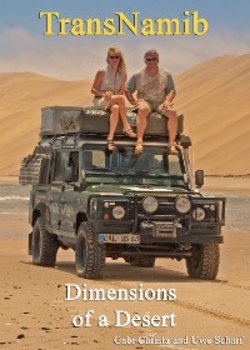Читать книгу TransNamib: Dimensions of a Desert - Gabi Christa - Страница 15
ОглавлениеThe Heart of the Namib
Not far from Aus, at the Garub Mountain, a wide area was reserved for wild horses. Since 1986, it has been part of the Namib-Naukluft-Park. There has been much talk about the origin of the horses in the desert and there is a wide range of opinions about their lineage. To me, the most probable answer is that they are the offspring of the riding horses of the German Schutztruppe and are of the Kreplin breed. But, the horses might easily stem from the legacy of the lord of the castle of Duwisib, Hans-Heinrich von Wolf. He imported more than 300 Trakehner horses. After his death, his wife returned to America, probably without the horses. One of the more swashbuckling theories is the following: that a ship carrying a cargo of breeding horses was wrecked in the mouth of the Orange River and the horses swam ashore. Hence, these proud animals could actually be flotsam. An artificial water hole was installed for the horses to prevent certain death by thirst in the desert. Now the well is deserted and no horses are to be seen. What I expect to be a horse, spotted on the horizon through the binoculars, turns out to be a lonesome Ostrich.
B4, Sperrgebiet 1 to the left, Sperrgebiet 2 and Namib-Naukluft-Park to the right
Measuring 49.768 square kilometres, the park is one of the largest in Africa. It forms the heart of the Namib Desert. The Naukluft Mountains, rising 1.965 metres, the Bushman Hill, 1.609 metres, and the Chowaga Mountain, 2.063 metres, are the highest elevations in the Namib-Naukluft-Park. Within the park, we find great potential for our tour exploring the different dimensions of the Namib Desert and we plan to stay here for longer.
The southern park border runs from Aus to Lüderitz; to the north, the park extends up to Swakopmund. At Swakopmund, it joins the Skeleton Coast Park, which, in turn, reaches up to the Angolan border. There, the Parque Nacional do Iona and the Reserva Parcial de Namibe ensure the protection of the Namib Desert.
Only creatures well adapted to the dry desert climate thrive in the Namib. These include the scorpions which I am not very fond of as well as snakes, beetles, reptiles, Mountain Zebras and springbok. But no other animal can compete with the proud Oryx antelope for my sympathy. As far as survival in the desert is concerned, the Oryx is perfectly equipped. Its body temperature adapts to the ambient temperature up to 45 degrees. It always keeps cool because the blood which circulates through its brain is first chilled in its nasal tract. In the west, the full length of the Namib Desert borders the Atlantic Ocean. That is why seals are part of the diet of jackals and hyenas. In the glittering light black spots are dancing across the sands: Ostriches, the only creatures we get to see in the park today.
